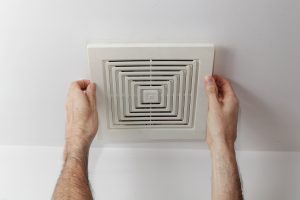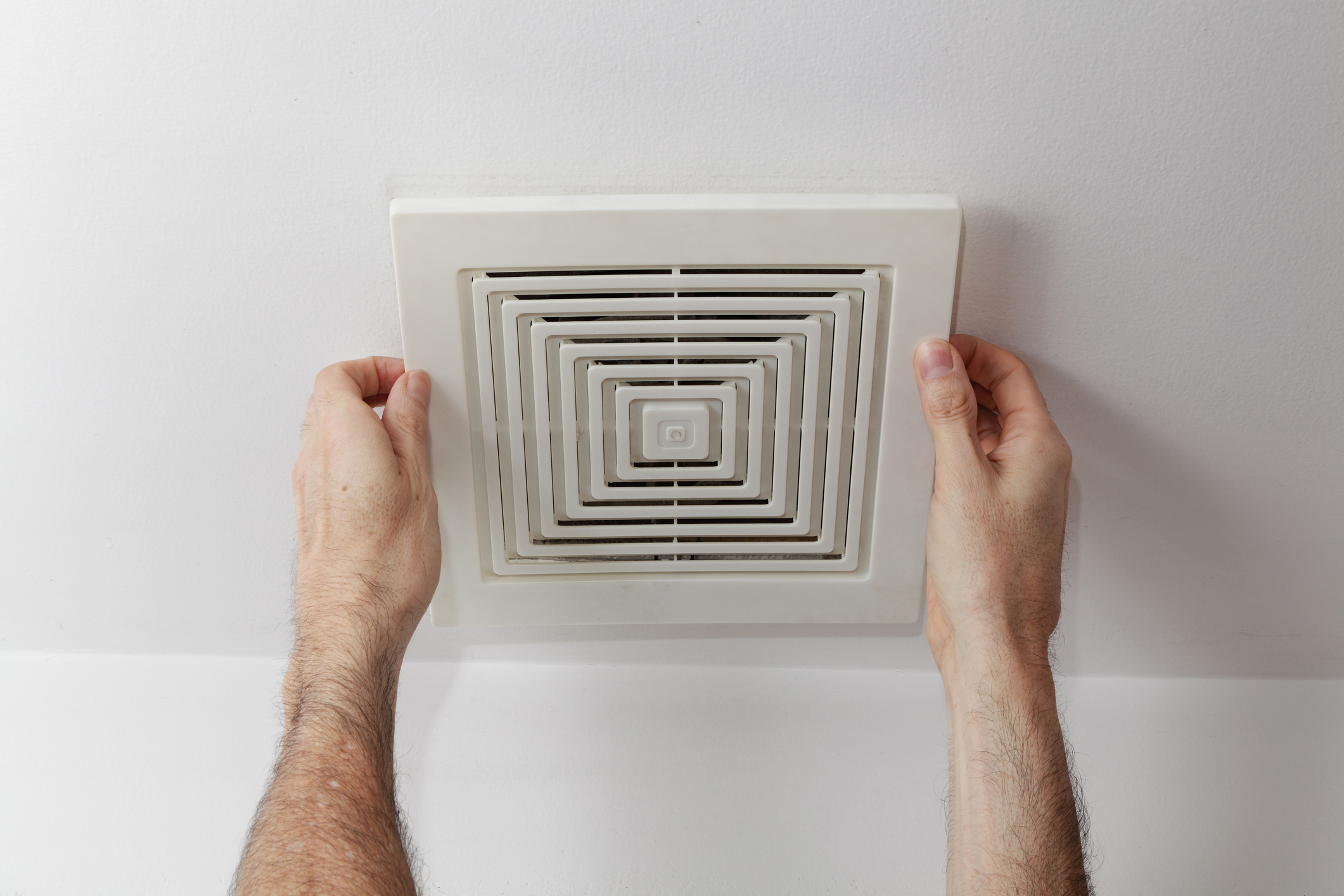 Bathroom air quality can get stale and smelly without good ventilation. Air fresheners and candles just don’t do the trick, masking scents rather than removing them. Further, bathrooms are a major repository for excess moisture, generated by showers, running water from the sink, and flushing. Most of that moisture stays right where it is and can cause problems unless you have adequate ventilation.
Bathroom air quality can get stale and smelly without good ventilation. Air fresheners and candles just don’t do the trick, masking scents rather than removing them. Further, bathrooms are a major repository for excess moisture, generated by showers, running water from the sink, and flushing. Most of that moisture stays right where it is and can cause problems unless you have adequate ventilation.
Bathroom Moisture Problems
All that moisture generated in the bathroom has to go somewhere, and it frequently ends up behind walls, baseboards and tiles, collecting in corners, and on the ceiling. Moist conditions can promote the growth of mold, mildew, and fungus, and lead to an unpleasant, musty smell, as well as the ruin of your drywall and woodwork.
Often, bathroom ventilation systems have not been properly designed. The exhaust fans make a lot of noise, but the moisture may be vented up into the attic or the ceiling joists, where it can cause problems as described above. Properly designed bathroom ventilation is ducted to the outdoors.
Installing Bathroom Ventilation
If you are ready to repair or to install your bathroom’s ventilation system, make sure that your ductwork goes through the attic or a wall so the moisture can exit outdoors.
When shopping for a new system, look for one with these features:
- Energy efficiency. You should run this system at least an hour after showers and other uses to ensure it adequately moves moisture out, so do get an efficient model. Look for the Energy Star label, a sign of efficiency.
- Quietness. You don’t have to tolerate those loud exhaust-ventilation fans anymore. Look for a quieter model with lower decibels. You may pay a little more, but it will be worth it.
- Right capacity. Your ventilation system should be able to move a certain amount of air in cubic feet per minute (cfm), depending on the square footage of your bathroom. See an HVAC consultant for calculations.
To learn more about bathroom ventilation, contact Ace Hardware Home Services. We serve Dayton and the surrounding area.








